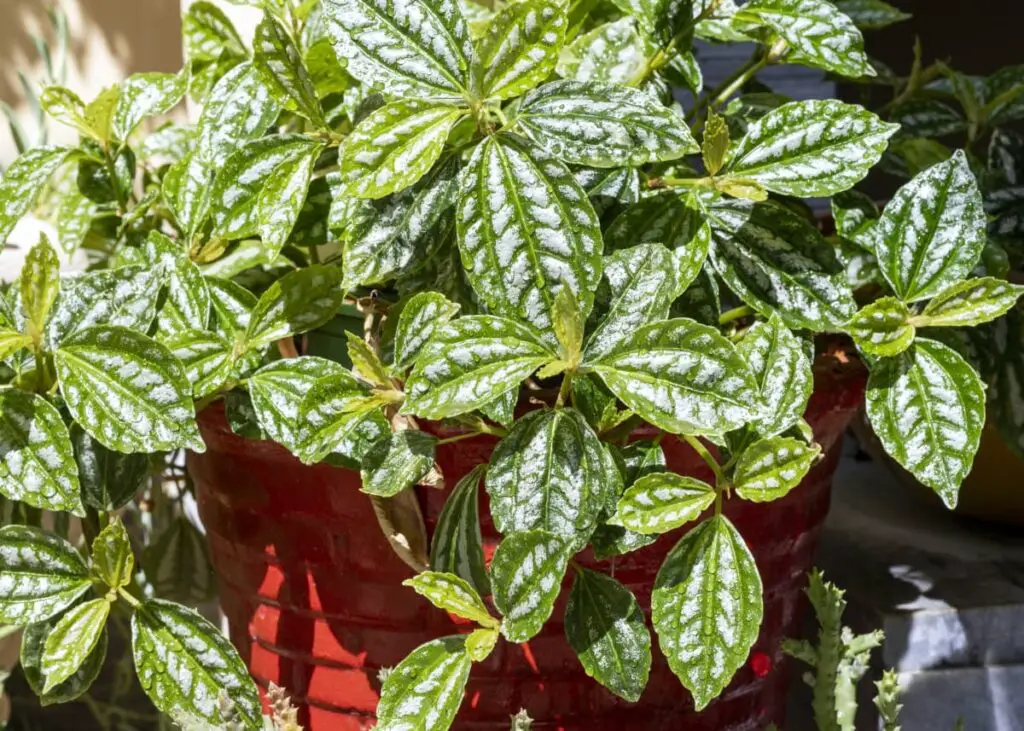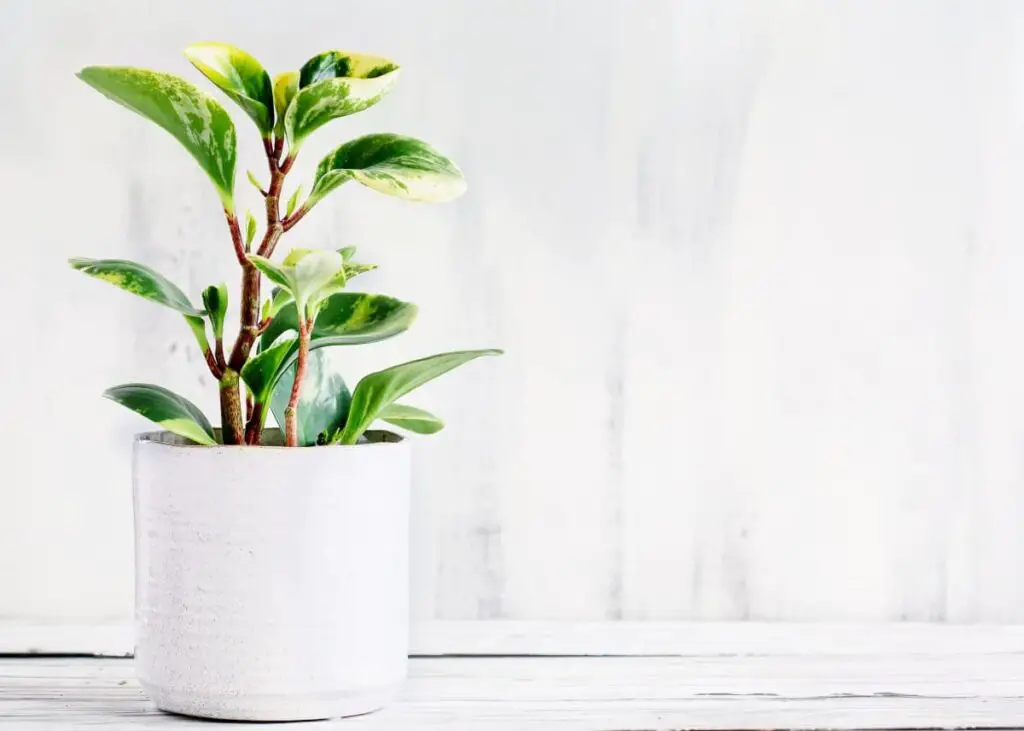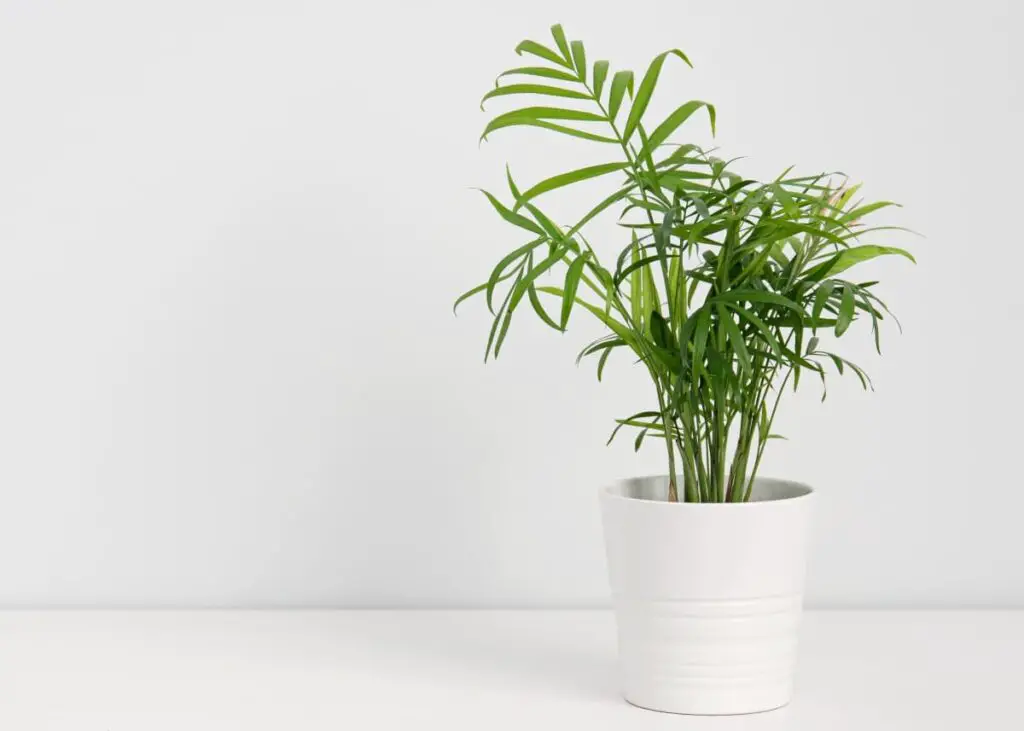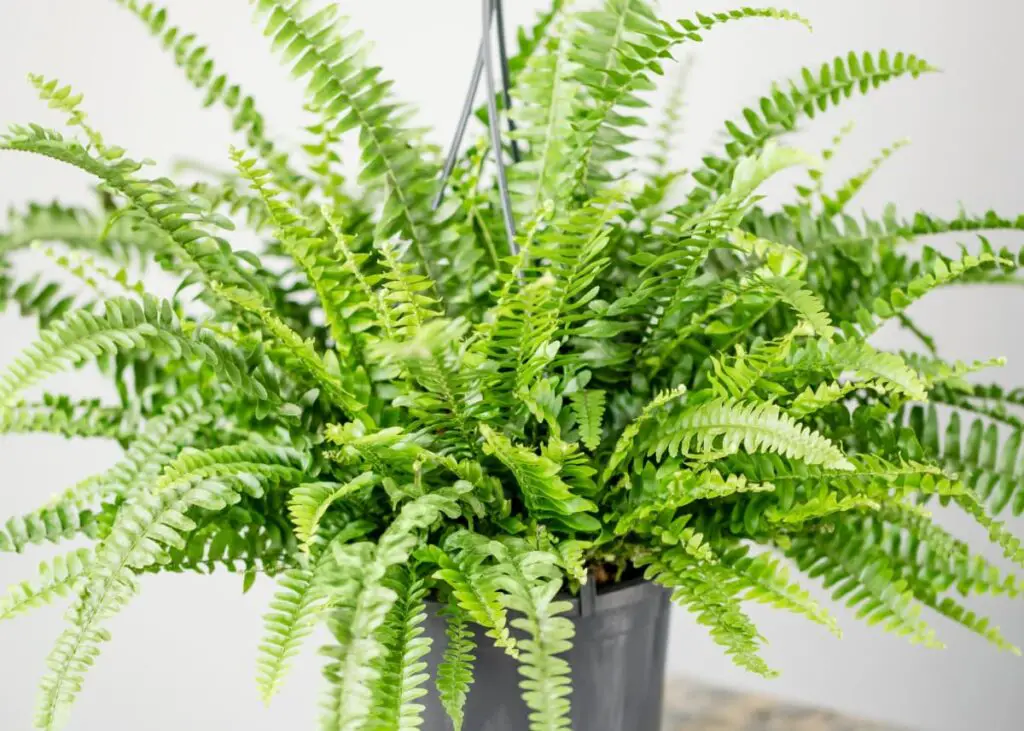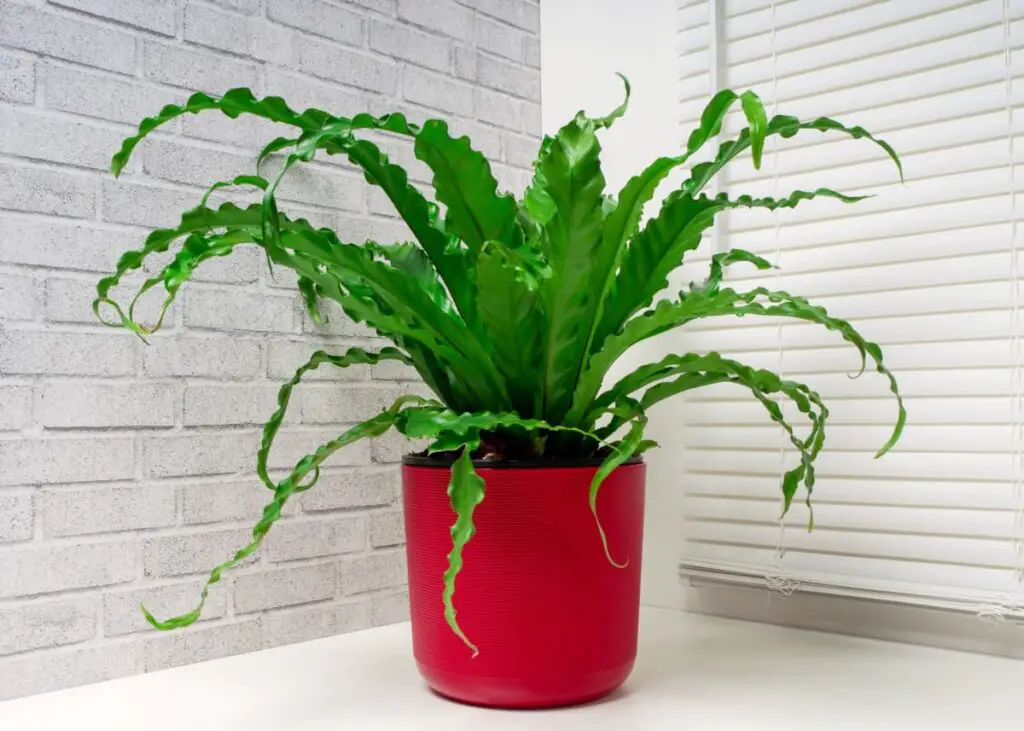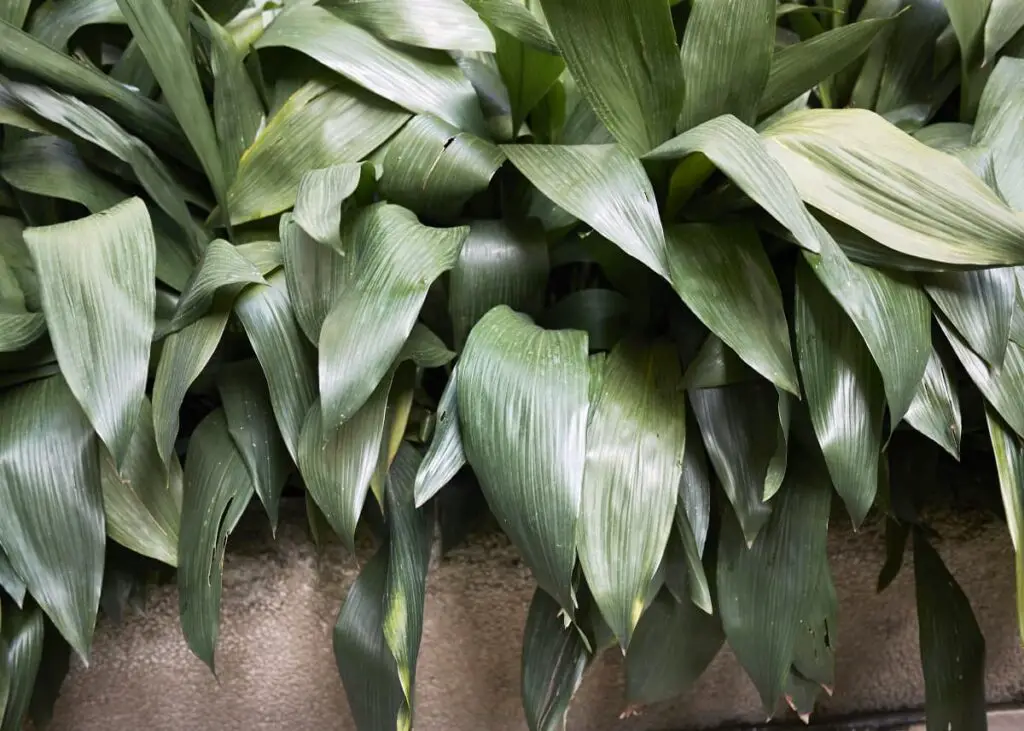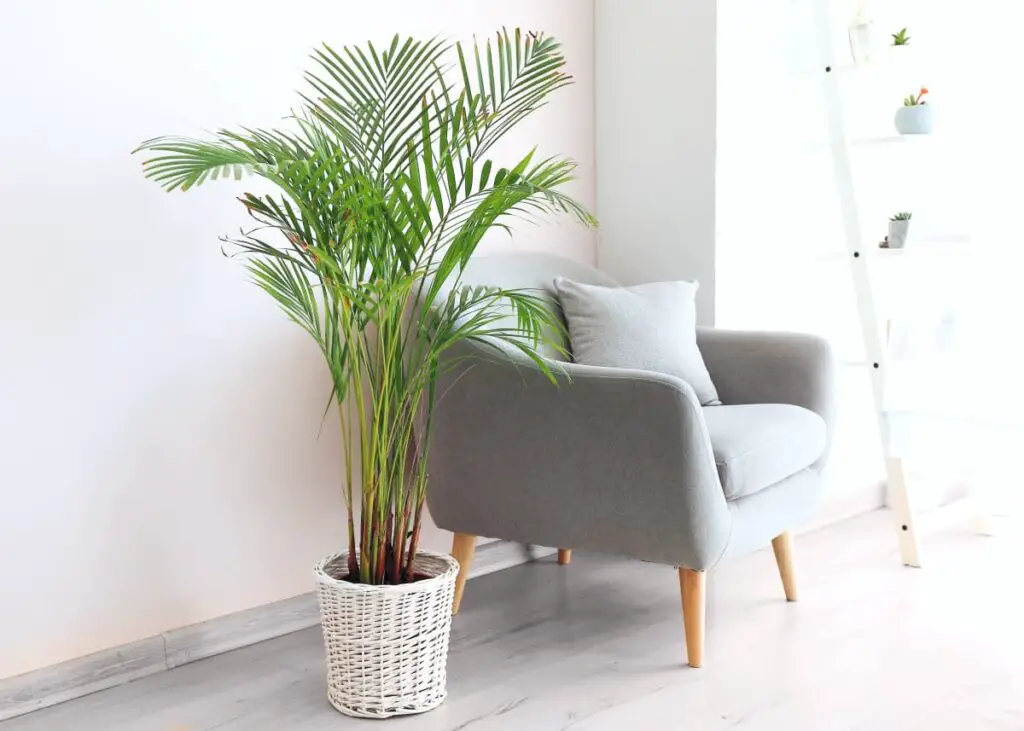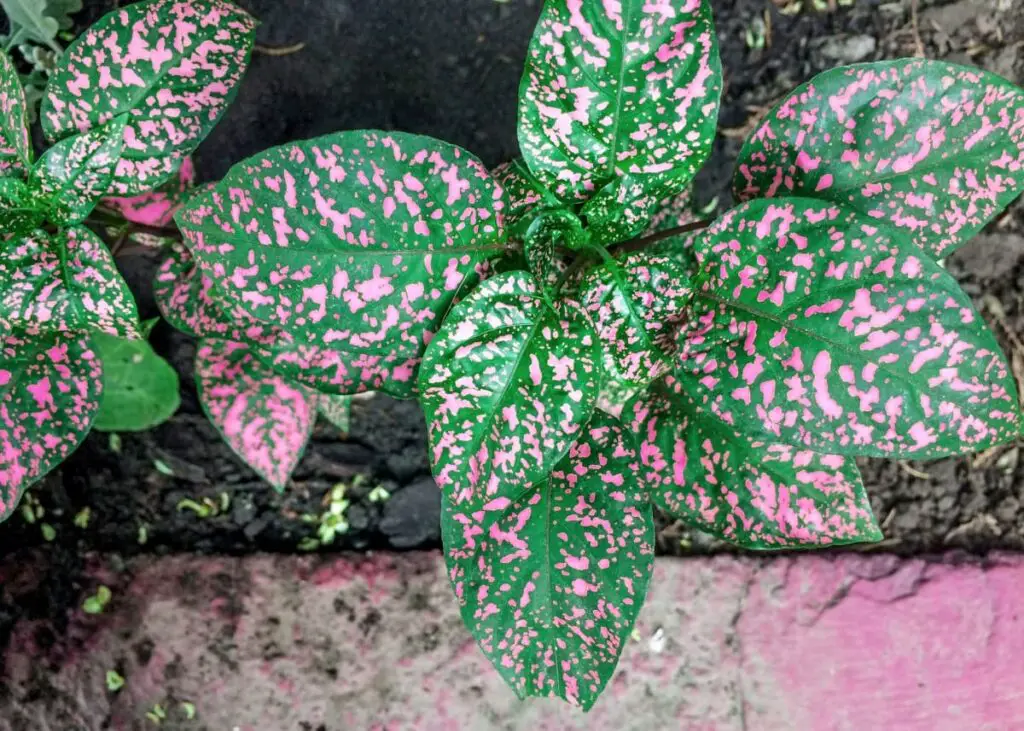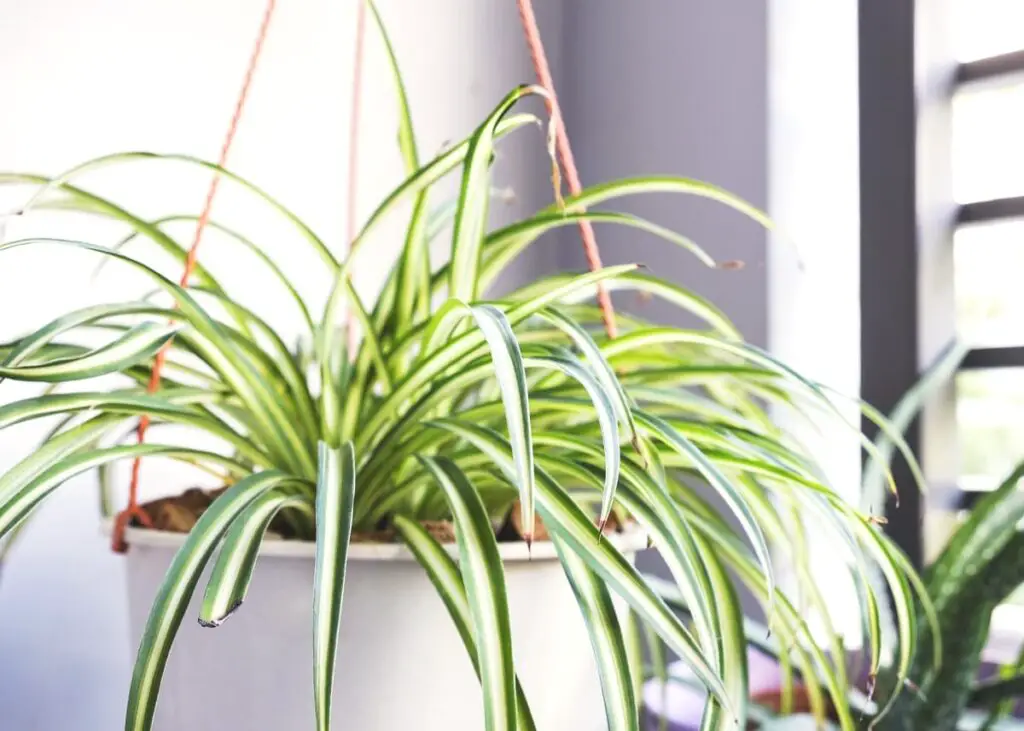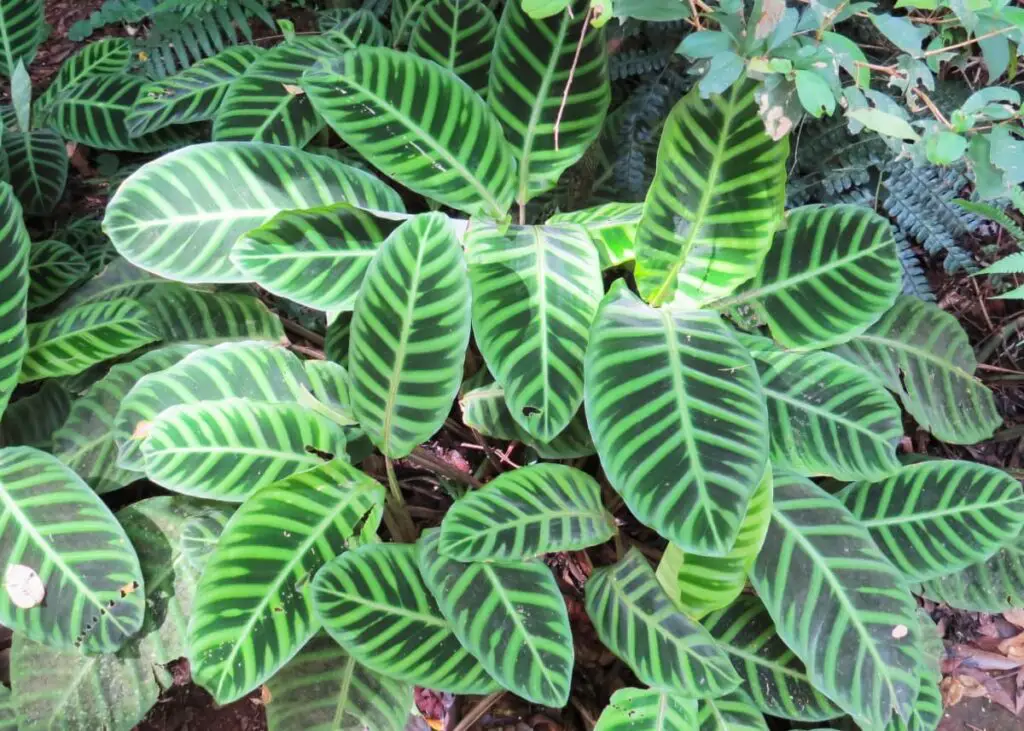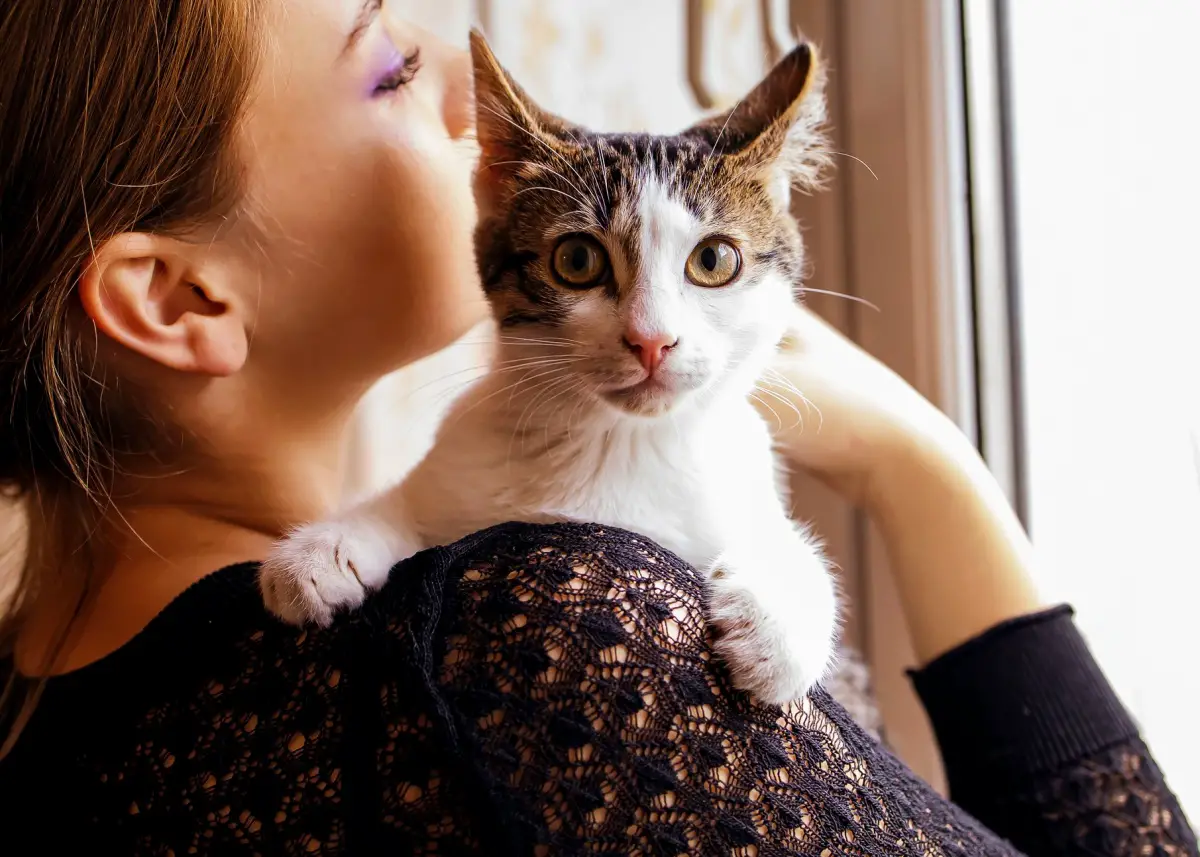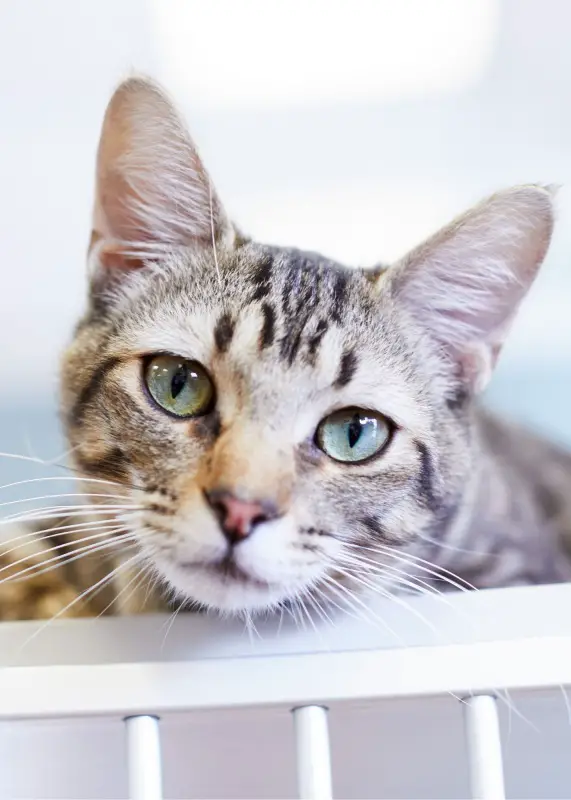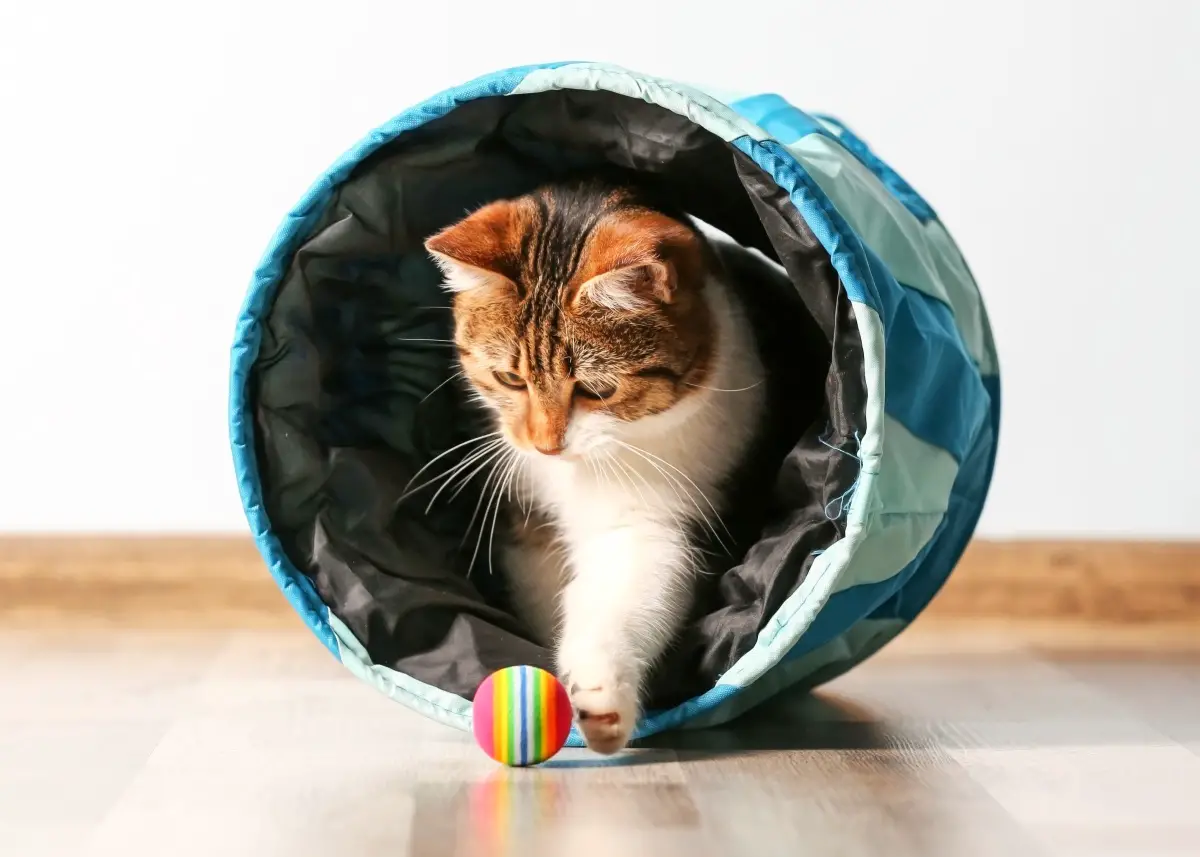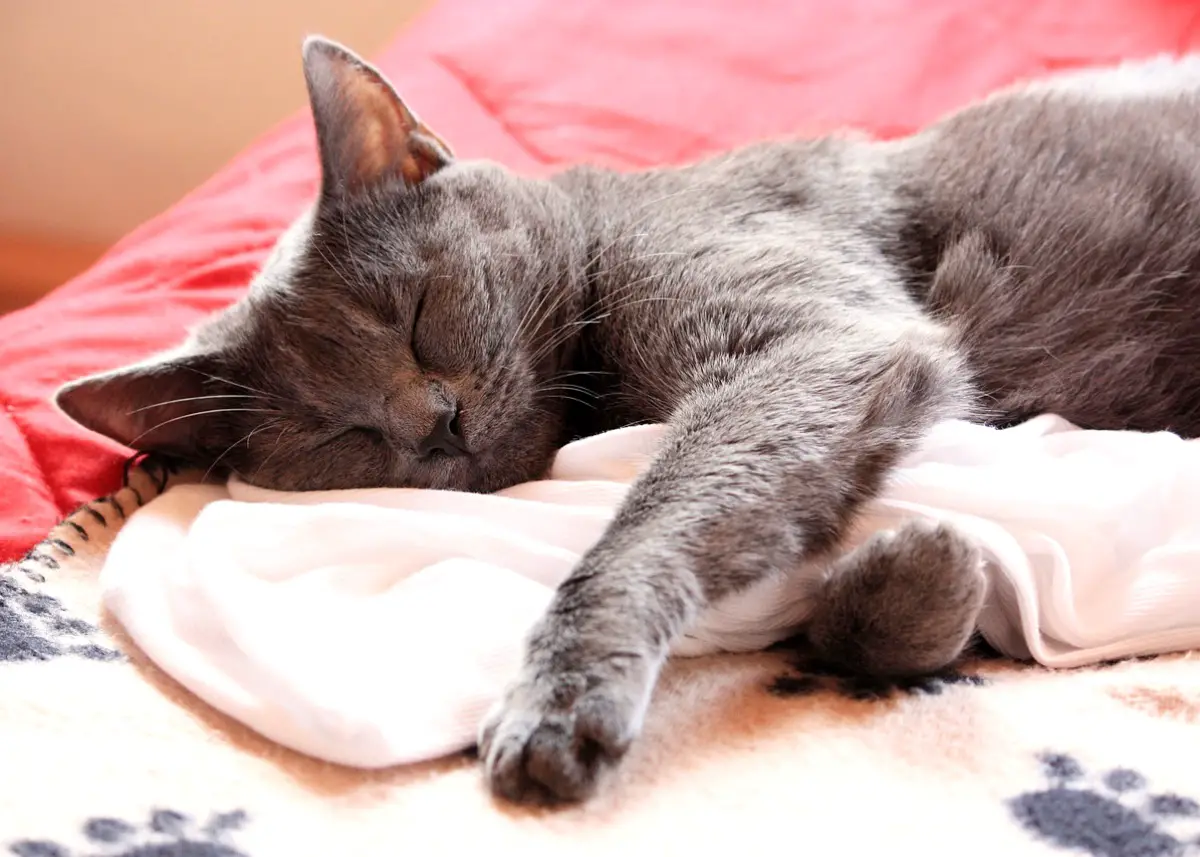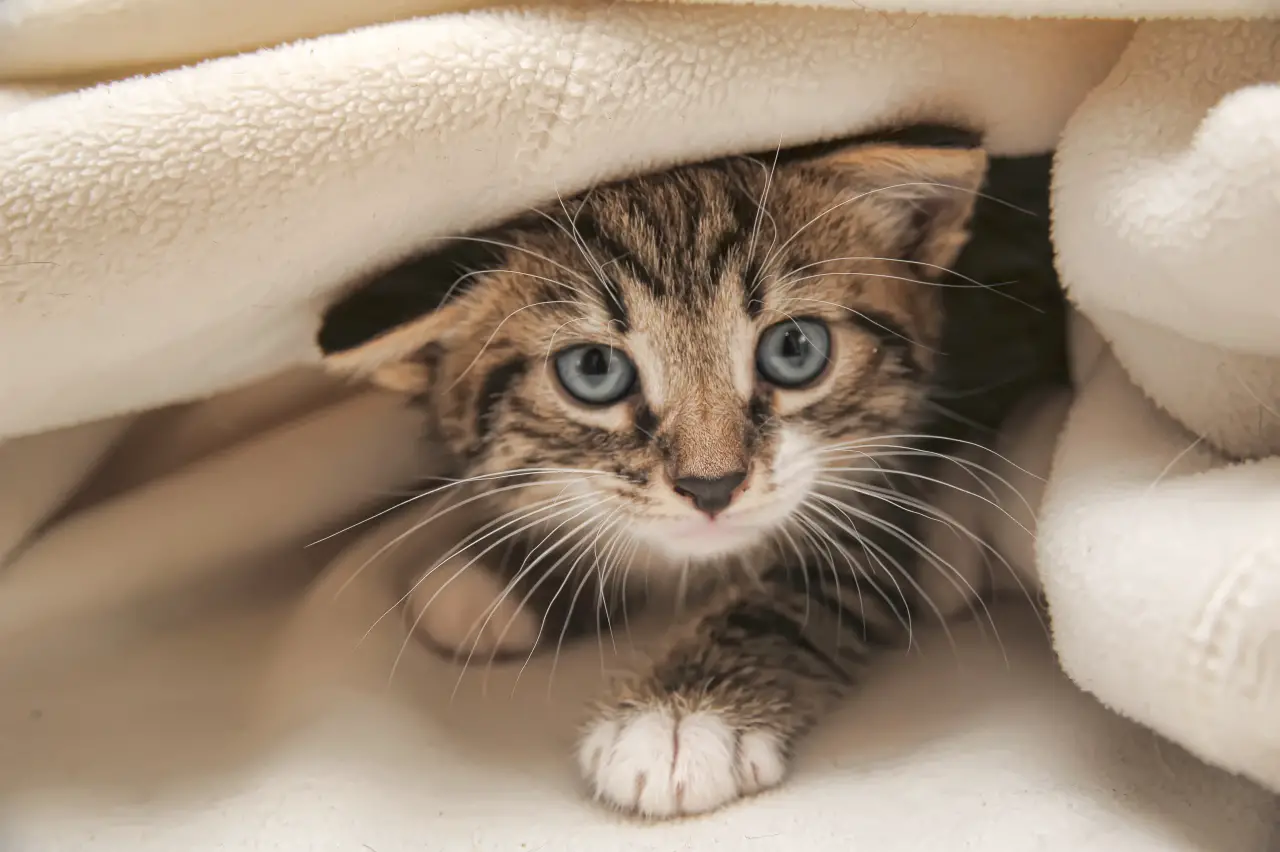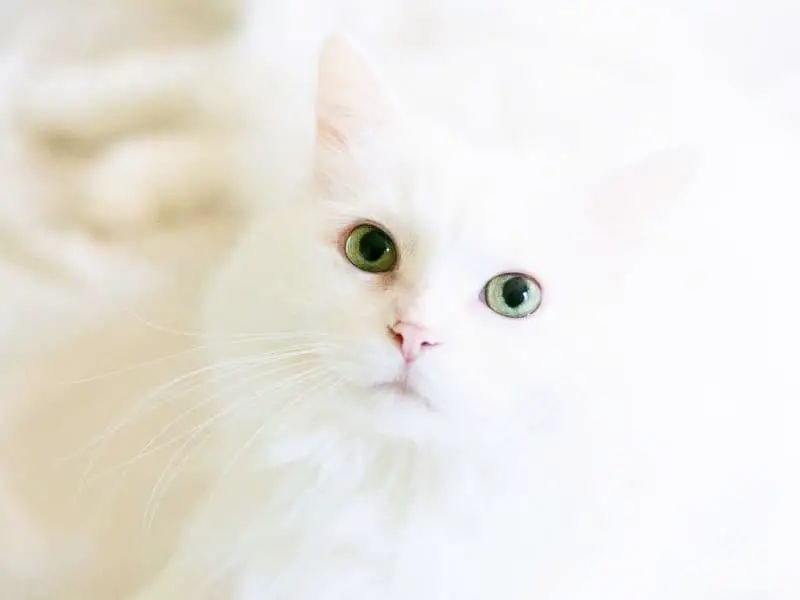9 Beautiful Low Light Indoor Plants that are Cat-Safe
This post may contain affiliate or referral links which means we may earn a sales commission. Please see our full affiliate disclosure here.
Since cats are curious creatures and some love to chew on plants and flowers, cats and plants can’t always coexist, especially if your home doesn’t get a lot of direct sunlight. Luckily, there are a number of low-light house plants that are safe for cats.
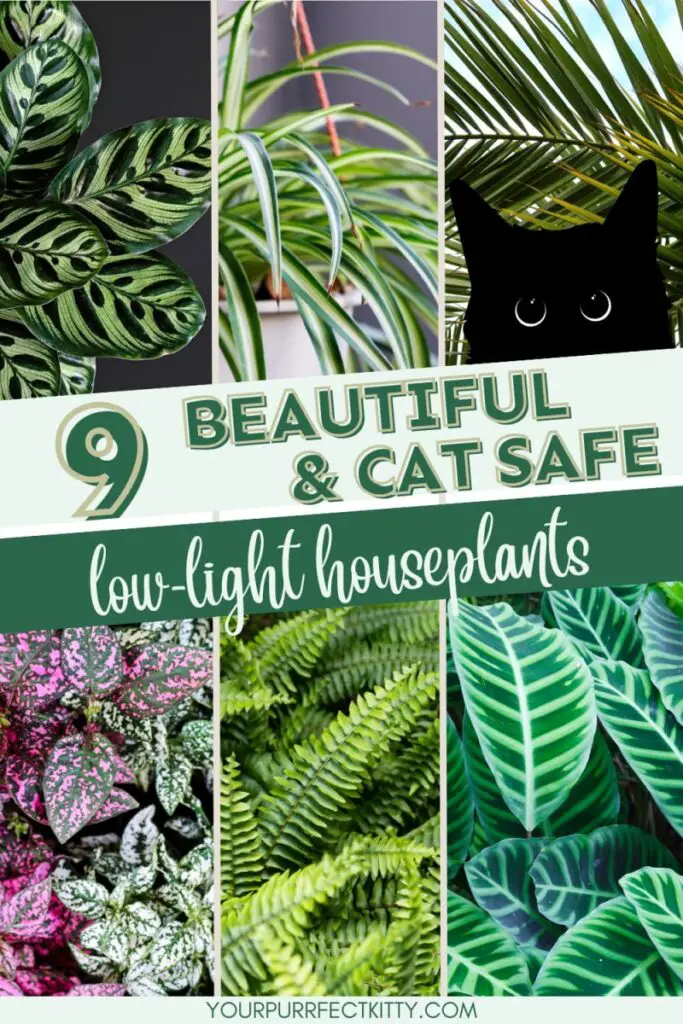
Many plants and flowers are unsafe for cats, and the effects can be as minor as making them nauseous or poisoning them. The plants below are not only perfect for homes with cats, but they are also all relatively easy to care for and will thrive in lower light and indirect light conditions.
African Violet
The African violet is a beautiful houseplant that is safe for cats. This popular houseplant is a favorite in many households for an added touch of color for any room. They come in various colors, such as violet, white, and pink.
African violets bloom year-round and are a great way to add color and life to your home. With proper care, you can enjoy their beautiful flowers all year long.
African violets require bright, indirect light and moist soil. They love warmth, so they should be kept in a room that’s around 70°F.
To keep your African violet healthy, make sure to water it from the bottom and fertilize it every two weeks with an all-purpose fertilizer. Pruning is also important as it will help encourage new growth and lots of flowers. Be sure to pinch off any dead or dying leaves and stems as needed.
African Violet Care:
- Prefers bright indirect light.
- Keep the soil moist and well-draining.
- Allow the top inch of soil to dry out before watering.
- Fertilize every two weeks during the spring and summer months.
Aluminum Plant
The aluminum plant is a safe choice for cat owners who are looking for a little bit of foliage interest in their homes. It is also known as the Watermelon Plant due to the pattern on the leaves that look like the rind of a watermelon.
The aluminum plant makes a beautiful addition to any home with its glossy green leaves and watermelon-like foliage. Its unique foliage is sure to make your indoor garden stand out. Plus, it’s fairly low maintenance and requires minimal watering.
The aluminum plant is also known for its air-purifying abilities. It helps remove VOCs (Volatile organic compounds) from the air.
In addition to its air-purifying abilities, the aluminum plant is also known for being easy to propagate. Simply take cuttings from your existing plant and place them in water until roots form, then transfer them into a pot with soil.
Aluminum Plant Care:
- This hardy plant can tolerate low light.
- It requires only occasional watering and occasional pruning to keep it looking its best.
American Rubber Plant
The American rubber plant is a safe choice for cats and their owners. The plant does contain sap that can cause an upset stomach if eaten, but it is not toxic. If your cat decides to chew on the plant, move it to a location your cat can’t access.
The American rubber plant can be a great addition to any home, providing a calming atmosphere and some greenery. Its beautiful leaves will provide beautiful visual interest for your houseplant collection.
With proper care, your American rubber plant will thrive for years to come.
American Rubber Plant Care:
- Prefers bright, indirect light and well-drained soil.
- Water your plant when the top inch of soil is dry, about once a week in most conditions.
- Fertilize monthly during the growing season.
Bamboo Palm
The bamboo palm is a safe plant for cats and an easy-to-grow houseplant that adds a touch of the tropics to your home. It is a popular choice for both beginning and experienced gardeners as it is both beautiful and relatively low-maintenance.
With proper care and attention, the bamboo palm can reach four to twelve feet tall, with an average height of six to eight feet. It is easy to care for and does not require a lot of water or sunlight.
Its leaves are long and thin with pointed tips, making it an attractive addition to any room. The bamboo palm adds a touch of wispy greenery without taking up too much space. Plus, the large leaves help clean the air in the house.
Bamboo Palm Care:
- This plant prefers bright, indirect light. Avoid placing the bamboo palm in an overly sunny spot, as this can cause the leaves to burn.
- Provide consistent moisture; allow the top inch or two of soil to dry out between watering.
- The bamboo palm is sensitive to fluoride, so use filtered or distilled water when watering your plant.
Boston Fern
The Boston fern is a great option if you’re looking to spruce up your home with low-light house plants that are safe for cats. The Boston fern is a popular houseplant that is beautiful, relatively easy to care for, and safe for cats and other pets.
It requires little attention and grows quickly, making it a great choice for those who may not have the time or experience to care for more demanding plants. The Boston fern also looks beautiful in both hanging baskets and pots, adding an elegant touch to any room.
As an added bonus, it’s also known to help purify the air. With its many benefits, the Boston fern is a great choice for any home with cats.
Boston Fern Care:
- The Boston fern prefers indirect sunlight and thrives in humid conditions.
- Mist regularly
- Watering the plant once a week should be sufficient.
Bird’s Nest Fern
The bird’s nest fern is a cat-safe, easy-care houseplant that’s perfect for pet owners. Native to tropical and subtropical regions of Asia, this plant gets its name from its unique fronds, which resemble small bird nests.
The bird’s nest fern prefers warm temperatures and humid conditions but can tolerate low light levels. It’s a low-maintenance plant that grows slowly, perfect for busy households.
Although it likes humidity, keep the soil lightly moist at all times and water regularly. Prune back any dead or overgrown fronds to encourage new growth.
With proper care, the bird’s nest fern can reach up to three feet in height and make a beautiful addition to your home.
Bird’s Nest Fern Care:
- Water when the top inch of soil is dry
- Fertilize every two weeks during the spring and summer months.
Cast Iron Plant
If you’re looking for a safe, durable plant for your home, the cast iron plant is a great option. This hearty plant has become popular recently because it withstands low light levels and minimal attention.
Cast iron plants are especially well-suited for beginners and low-maintenance households since they require minimal watering and can thrive in low humidity. Additionally, this plant is a great choice for outdoor gardens if you live in zones 8-10.
Cast iron plants can be quite attractive when taken care of properly, with long pointed leaves that are a glossy green and can grow to approximately two feet tall.
Cast Iron Plant Care:
- The cast iron plant prefers bright indirect light.
- Water when the top inch or so of soil dries out.
- Fertilize during the spring and summer months, but be sure to avoid over-fertilizing as this can burn the leaves.
Parlor Palm
The parlor palm is a safe, easy-care houseplant that’s perfect for pet owners. Native to tropical regions of the Americas, this popular houseplant gets its name from its ability to thrive in low light levels, similar to those found inside homes and offices.
The parlor palm is also a great choice for pet owners as it is non-toxic to cats and dogs. Not only does this attractive plant add greenery to any room, but it can also help filter out toxins from the air in your home.
With its glossy leaves and upright bushy shape, the parlor palm will look beautiful in any living space while helping to keep your air clean and your pet safe.
With proper care, this attractive plant can reach up to four feet tall on average and make a great addition to any home.
Parlor Palm Care:
- Allow the top inch or so of soil to dry out before watering.
- Mist regularly
- Fertilize every two weeks during the spring and summer months.
Polka Dot Plant
The polka dot plant is a safe, low-maintenance houseplant perfect for beginners and experienced gardeners alike. The plant gets its name from its striking polka dotted leaves that are dotted with deep green markings and pink, cream, or red dots.
This plant can tolerate low light conditions but prefers bright indirect sunlight. It is easy to care for and requires little water, making it a great choice for busy pet owners. With its unique foliage and minimal upkeep, the polka dot plant is sure to bring some life into any home.
The polka dot plant will stay relatively small, usually measuring 10-12 inches in height and width. The leaves are oval-shaped and grow on trailing stems. These beautiful plants can be grown indoors or outdoors depending on your climate.
Polka Dot Plant Care:
- Water when the top inch of soil is dry.
- Fertilize every two weeks during the spring and summer months.
Prayer Plant
The prayer plant gets its name from the way its leaves fold up at night, as if in prayer. The prayer plant is a popular houseplant because it is easy to care for and does not require much light. It does best in indirect sunlight and should be watered when the soil is dry to the touch.
Its leaves are dark green speckled or striped with purple, pink, red, or light green which makes it an eye-catching house plant. The Prayer Plant is also known for its ability to move its leaves up and down throughout the day as if in prayer.
It requires bright indirect sunlight, and should be watered moderately every week or two. With the right care, the prayer plant can reach up to twelve inches in height and makes a unique addition to any home.
Prayer Plant Care:
- Allow the top inch of soil to dry out before watering.
- Fertilize every two weeks during the spring and summer months.
- This plant likes to be in bright, indirect sunlight.
Spider Plant
The spider plant is a popular houseplant for several reasons. It’s easy to care for, grows quickly, and is safe for cats. The spider plant gets its name from its long, spider-like foliage. The leaves are variegated with white stripes, and the plant produces small white flowers. When the flowers die back, they leave behind small, round seed pods.
The spider plant is native to Africa but has been introduced to many other parts of the world. In warm climates, it can be found growing in gardens and yards.
The spider plant can easily propagate from stem cuttings and can also be grown from seed. Spider plants thrive in bright indirect light, but it can also tolerate low light conditions.
Spider Plant Care:
- Allow the soil to dry out between watering; once a week should be sufficient.
- Spider plants are not heavy feeders, so they only need to be fertilized once a month during the spring and summer months.
Zebra Calathea
Meet the zebra calathea, a beautiful tropical plant that’s safe for cats The zebra calathea gets its name from its striking striped leaves dotted with deep green markings. This plant is closely related to the prayer plant, which is also safe for cats.
This stunning foliage can brighten up any area of your home, whether it be in the living room, bedroom or kitchen. Not only is this plant aesthetically pleasing, but it’s also non-toxic to felines, so you won’t need to worry about them nibbling on the leaves.
The zebra calathea also doesn’t require much effort to take care of as it only needs to be watered every two weeks and placed in bright, indirect sunlight. These plants are slow growers but can reach up to two feet tall.
If you’re looking for a stylish and unique plant to add to your collection, the zebra calathea is a great choice!
Zebra Calathea Care:
- The zebra calathea prefers bright indirect sunlight.
- To avoid root rot, water when the top inch of soil is dry to the touch.
- Fertilize every two weeks during the spring and summer months.
Final Thoughts
If you’re looking for an indoor plant that is low maintenance, easy to care for and looks great, we’re sure that one or more of these low-light house plants that are safe for cats is perfect for you. All of the plants on this list are hardy and can thrive in various light conditions, making them ideal houseplants for homes with cats.
Whether you’re just starting out with indoor gardening or you’re an experienced green thumb looking for new plant varieties, this guide can help you find the right one for your home. From air-purifying aluminum plants to tall and leafy palms, there’s a house plant for everyone.
With just a little bit of TLC, your home will be filled with lush greenery and beautiful flowers.



